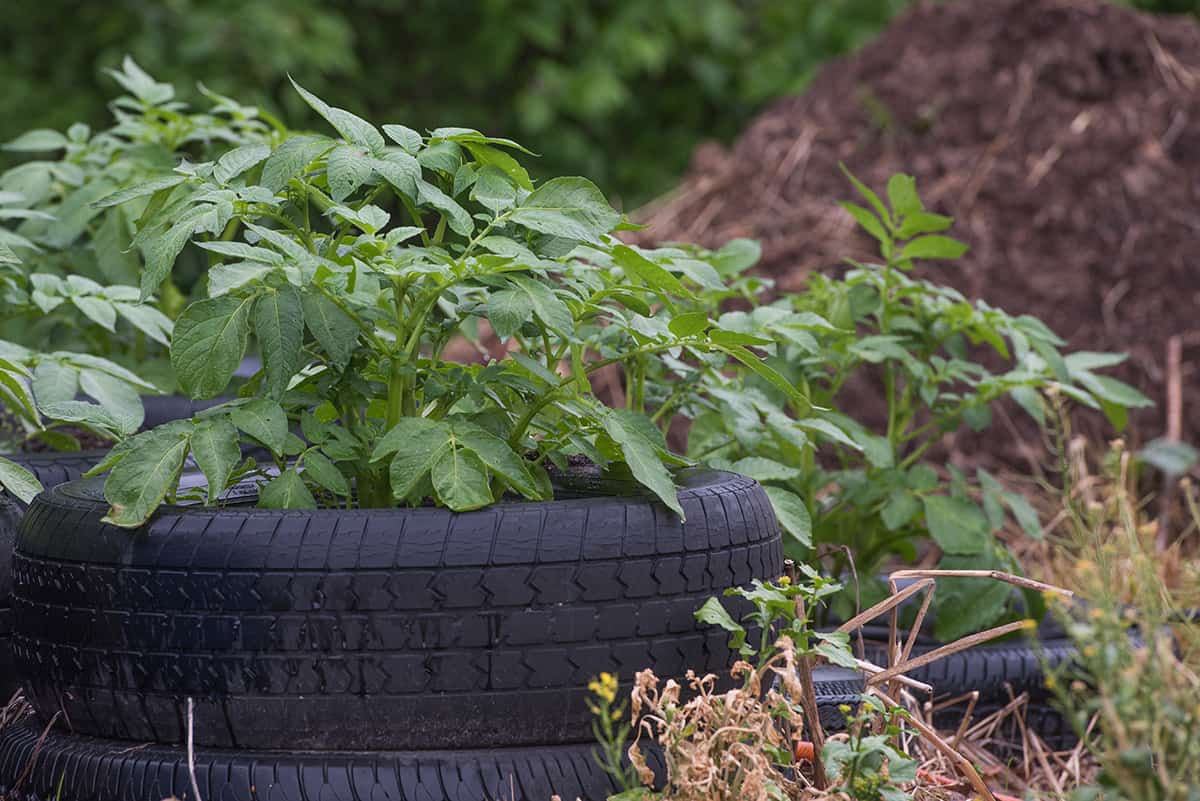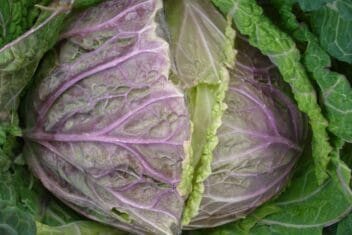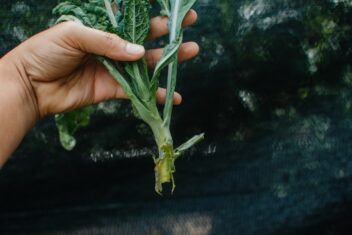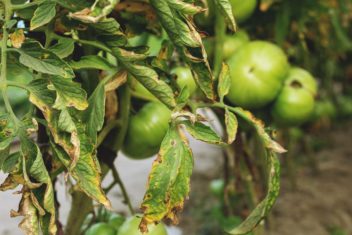If you’ve been thinking about growing potatoes but are hesitant about it, don’t be! Growing potatoes is insanely easy. Even better, you can grow them with the help of upcycled materials. Even if you don’t have a ton of space, you can grow hundreds of pounds of potatoes in tire towers.
This guide will show you how to make the most of your space with upcycled materials, so let’s get rolling!
What are Potato Tire Towers and How do They Work?
Potato tire towers are pretty much exactly as they sound. Can you envision a mighty tower made of used tires stacked on top of one another? Now imagine a wealth of potatoes growing merrily inside that.
The reason these work so well for growing ‘taters, precious, is that potato plants produce really well when grown vertically. As the aerial (aboveground) parts of the plant grow, they keep creating root offshoots. These develop into the tasty tubers we love so dearly.
As a result, growing in potato tire towers means that you can double or even triple the yield you would have harvested with in-ground plants.
Tires happen to be ideal for these towers because of their stackability. You can keep on plopping new ones on as the plants grow. Just add soil around the stalks as needed. Then, at the end of the growing season, you lift the tires off again one by one.
What You’ll Need:
- Several used car tires: Choose tires that are roughly the same size. If you have some that are larger than others, use those as the bottom-most levels. You can use the smaller ones on top as the plants keep growing.
- Potting soil with extra compost: Potatoes do best in loose, well-draining, slightly acidic, loamy soil. Use soil that’s ideal for raised beds and container gardens, as it drains better and doesn’t compact. Work a fair bit of well-aged compost into it before adding it into the tires.
- Potato slips, or small seed potatoes with several buds forming in their eyes.
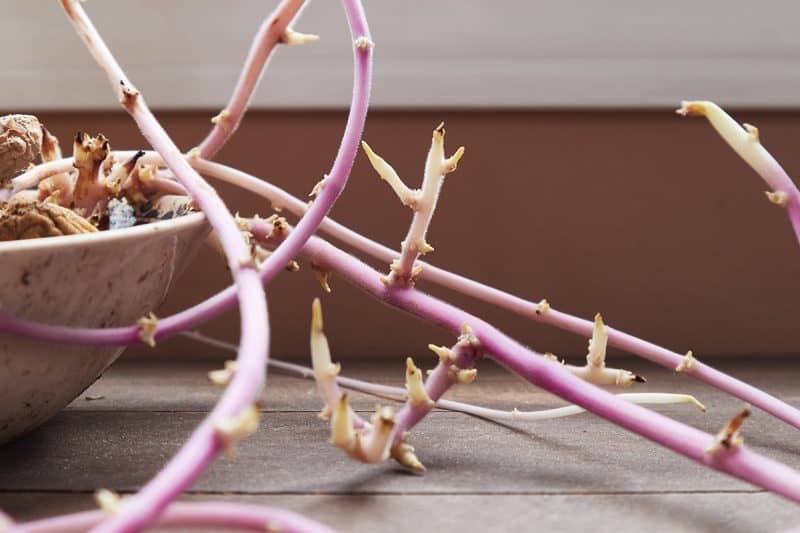
A note about used tires: if you live in a cold area, you may come across used winter tires during your materials search. Don’t use these.
I made the mistake of creating some towers with winter tires accidentally once. Still have the scars from them. Those things have vicious little spikes on them that can cause a fair bit of damage if you brush across them. They’re even more vicious to kids and small animals that may bump into them.
Instructions:
Alright, now let’s get those potato tire towers started—first, location. Potatoes need a lot of sunshine to grow properly. Choose one of the sunniest sites on your property, and lay down at least two inches of heavy gravel or mid-sized stones as a base.
Potato plants will rot if they get “wet feet.” Make sure they plenty of drainage at the bottom, and you’ll avoid this issue. The last thing you need is to re-create your own version of the great Irish famine in your backyard with a water blight like Phytophthora infestans.
If your soil is already well-draining, great! If not, work in some well-rotted compost into the top foot or so of the soil where you intend to plant.
Place some tires atop the ground and nestle them into place. Then stack another level or two on top of them.
Pour in your compost-rich soil to a little over the halfway mark. If you’re using two tires to start with, then fill one up completely, followed by another inch or two. Similarly, if you’re using three tires, fill one and a half, and add a bit more for good measure. Water enough, so the soil is moistened but not saturated.
Next, take four medium or five small seed potatoes or slips. Nestle each of these into the soil about 1.5-2 inches deep. I like to use five of them so there’s one in the middle, with the others in the four cardinal directions. Once these are pushed in, cover them with another few inches of soil. Water lightly again.
Maintenance as Plants Grow
As your potato plants grow, you’ll need to keep mounding soil around the base of each stalk. This keeps any of the potato roots from being exposed to sunlight. We need to keep them submerged in the soil because of the toxins they can produce.
Remember how potatoes are part of the nightshade (Solanaceae) family, along with tomatoes, peppers, and eggplant? Well, this is because all of these plants contain a toxin called solanine. You’ll find it in green tomatoes: the solanine dissipates as the tomatoes ripen and redden. Similarly, you’ll find it in green potatoes.
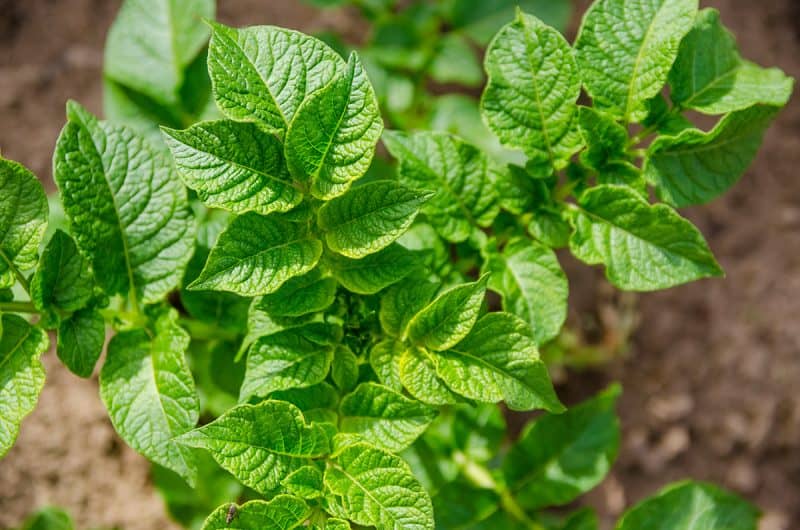
Have you ever gotten a stomach ache after eating greenish potatoes? Yeah, that’s why. Furthermore, your potatoes will turn green if they’re exposed to sunlight while growing. This toxin is great to fend off bacteria and various insects, so they don’t prey on the tubers. It’s less awesome for human consumption, considering the gastrointestinal issues and breathing difficulties…
So, long story short, keep the soil piled well up the stalks on your potato plants. When they grow about four inches over the top of the tire they’re in, stack another tire on top. Lather, rinse, repeat. You can keep stacking these potato tire towers throughout the growing season. You’ll know it’s time to harvest when the plants’ foliage loses color and starts to die back.
As mentioned, all you need at that point is to remove the tires one by one. Then, you can pull the soil mounds apart and remove the tantalizing tubers inside.
We have an amazing guide on here that covers everything you need to know about growing potatoes. Refer to that if you need help choosing varieties or troubleshooting issues with your plants.
Some Notes on the Safety and Health of Potato Tire Towers
There are a lot of pros and cons to growing any kind of food in rubber or plastic. Some people prefer not to grow food in used tires or potato tire towers because of the chemicals inside them. So is growing potatoes in tire towers a bad idea?
This is a valid concern, of course. Yes, tires are made of materials that you don’t particularly want to ingest. They’re going to erode and off-gas over time, leaching a host of chemicals and metals into the environment. That means they’ll go into the foods we grow in them as well, and by extension, into our bodies.
That said, it takes a long time for tires to break down. Typically it takes somewhere between 50 and 80 years for a tire to break down. This means that the chemicals being released into food-growing soil within them are really negligible. Chemicals tend to be released more with friction and wear, such as when they’re actually on cars.
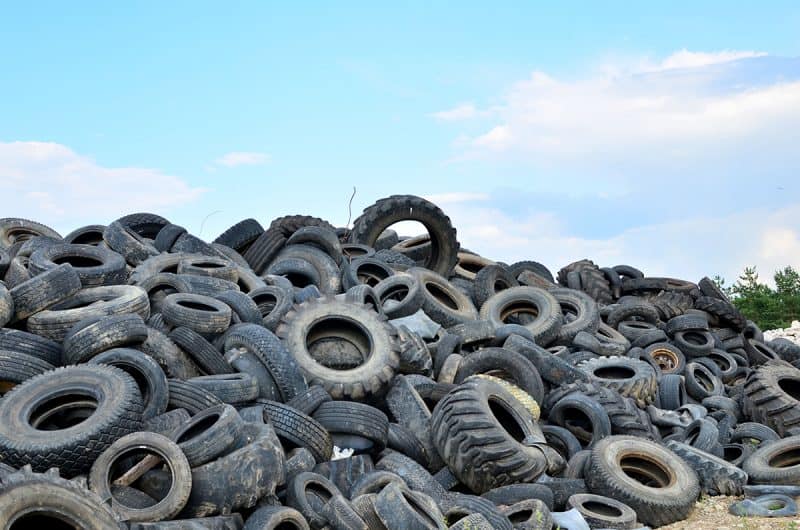
Using tires to grow food means that there’s less landfill waste because of them. Furthermore, they can be convenient for growing large amounts of food in small areas, especially when the local soil isn’t great for digging down into.
A great deal of my own food-growing experience has been in seriously disadvantaged areas. When you have very little to work with from the beginning, you take advantage of everything you possibly can. Weighing the pros and cons of growing potatoes in tire towers is up to the individual, of course.
Generally, when people have to choose between feeding their families and worrying about extremely mild chemical exposure, the former wins out.
Do your research to determine whether you feel comfortable growing in this manner. Then, you can make an informed decision as to your own tire-based food-growing endeavors.
